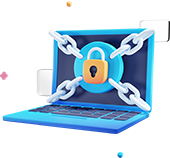




Protecting systems, networks, and data from illegal access, use, disclosure, interruption, modification, or destruction is known as cybersecurity. No matter the size or sector, it is an essential part of any firm.
Malicious software that can harm or take down computer systems is known as malware. It can spread via a number of channels, including malicious websites, email attachments, and removable storage devices.
An example of a social engineering attack is phishing, which tries to persuade people to divulge passwords and credit card numbers. Phishing attacks can also be conducted using other platforms, like social media and SMS messaging, in addition to email, which is where they are frequently conducted.
DoS attacks aim to saturate a system or network with traffic, blocking legitimate users from accessing it.
MitM attacks happen when an attacker eavesdrops on two parties' communication and impersonates one of them. This can be used to alter data as it is being transmitted or to steal critical information.
The business's methods for protecting its networks, systems, and data should be outlined in its security policies and procedures. All staff members should be informed about them, and they should be updated and reviewed frequently.
Strong passwords and multi-factor authentication (MFA) can help to protect accounts from unauthorized access.
Software updates often include security patches that can help to protect systems from known vulnerabilities.
Antivirus and antimalware programs can assist in defending systems against malware and other threats.
Employees should receive training on cybersecurity threats and how to defend the company from them.
Users are frequently duped into clicking on dangerous links or opening malicious attachments by phishing emails and rogue websites. Never click on any links or open any attachments in emails from unknown senders or on dubious-looking websites.
Share private data with reputable websites and companies only, such as your Social Security number and credit card number.
Public Wi-Fi networks are frequently unprotected, which makes it simple for hackers to eavesdrop on your traffic. If you must use a public Wi-Fi network, encrypt your traffic using a VPN (virtual private network).
Having a backup of your data helps speed up your recovery in the event of a cyberattack.
By following these tips, you can help to protect yourself and your business from cybersecurity threats.